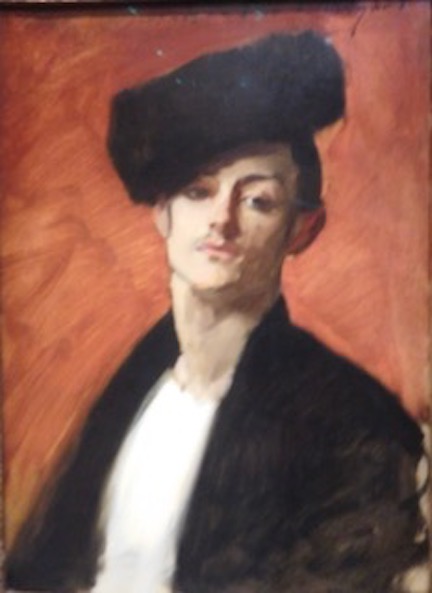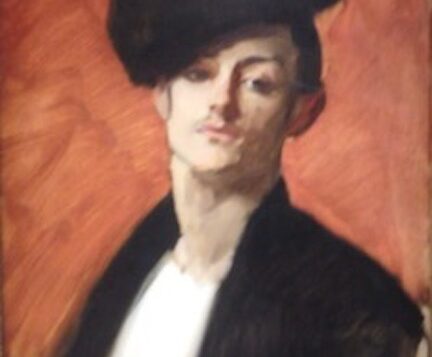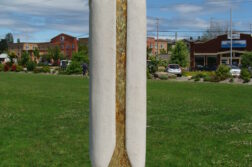An Overlooked Notable at the Benedick
To the Editor:
William Benemann’s extremely enlightening feature on The Benedick, a late 19th-century apartment building for bachelors in New York City (in the March-April 2023 issue), is a worthy addition to the Review’s histories of gay and homosocial life in America. I’d like to point out, however, that the longtime partner of sculptor Francis Millet was no ordinary Army officer. Colonel Archibald Butt, a graduate of the Episcopal Church-affiliated Sewanee: University of the South (Tennessee), served as military aide to President Theodore Roose-velt after wartime service overseas. At the time he perished as a passenger aboard the Titanic, Colonel Butt was military aide to President William Howard Taft.
I hesitated to write this because I think William Benemann’s Unruly Desires: American Sailors and Homosexualities in the Age of Sail is an important, groundbreaking work documenting our “family history” on the high seas. I trust him as a historian and don’t want to be a nitpicker. On the other hand, my late partner was also a graduate of Sewanee. There’s a memorial plaque to Colonel Butt in the university chapel. The weekend I was at Sewanee to ceremonially scatter George’s ashes in Lost Cove, I got into an argument with a staff member who tried to straightwash Colonel Butt’s relationship with his partner. And so it goes.
Elliott Mackle, Atlanta, GA
Sargent Piece Dovetailed with SF Exhibit
To the Editor:
 I just immersed myself in John Singer Sargent for my Bay Area Reporter write-up of the Sargent and Spain exhibit now in the Legion of Honor in San Francisco, having traveled from the National Gallery in Washington. So, I welcomed Andrew Holleran’s excellent review of the Sargent biography by Paul Fisher [in the March-April 2023 issue]. However, Holleran errs when he states that Sargent never managed to paint Albert de Belleroche, producing only a preliminary sketch. The portrait below, loaned by the Colorado Springs Fine Arts Center at Colorado College, is featured in the exhibition.
I just immersed myself in John Singer Sargent for my Bay Area Reporter write-up of the Sargent and Spain exhibit now in the Legion of Honor in San Francisco, having traveled from the National Gallery in Washington. So, I welcomed Andrew Holleran’s excellent review of the Sargent biography by Paul Fisher [in the March-April 2023 issue]. However, Holleran errs when he states that Sargent never managed to paint Albert de Belleroche, producing only a preliminary sketch. The portrait below, loaned by the Colorado Springs Fine Arts Center at Colorado College, is featured in the exhibition.
Some years ago, I sent you a write-up of my late artist friend, Richard Caldwell Brewer. More recently, along with the Sargent review, I’ve produced for BAR a review of the San Francisco State nonbinary show, a book review of the George Platt Lynes biography, and a review of the Asian Art Museum of San Francisco’s retrospective of lesbian artist Bernice Bing. So it seems there’s a lot happening in the Bay Area.
Always enjoy your magazine,
Robert Brokl, Oakland, CA
To the Editor:
Andrew Holleran’s article, “The Inscrutable John Singer Sargent,” came wonderfully alive for anyone who had the opportunity to see the Sargent and Spain exhibit at the Legion of Honor in San Francisco. As noted in the article, the show was originally mounted at the National Galleries in Washington, D.C. The San Francisco exhibit came with a series of lectures and discussions, including a kickoff visit by one of the organizers, London-based Sargent scholar Richard Louis Ormond.
It turns out Sargent made seven trips to Spain. The exhibit shares the works that were inspired by his regional travels and adds a whole new dimension to the range of his art. His formal portraits of the rich and famous were set aside in favor of the street scenes, the landscapes, and the other sights of Spain. The Spanish experience also contributed to a very passionate palette of light and movement, especially with his Gitano sketches and the famed
action pieces of the Spanish dancer “La Carmencita.”
I don’t know if Sargent ever met the Spanish painter Joaquín Sorolla (1863–1923), who was a close contemporary [Sargent’s dates are 1856–1925]. Their use of color and fluid brushstrokes employed a similar style of light and movement. Many of their subjects were celebrations of the day-to-day life of the people of Spain.
At this point, I am not so curious about Sargent’s sexuality, preferring to let the subject matter speak for itself, but I am curious as to how Sargent interacted with the Spanish society of the times, particularity since his travels to Spain intersected with an event that had large ramifications for two countries in particular: the Spanish-American War. Evidently, as a Belle Époque painter, Sargent, like Sorolla, seemed to be above the fray. Still, there were many “inscrutable” social issues of the day that didn’t seem to register in Sargent’s work, or that of Sorolla for that matter.
Ken Borelli, San Jose, CA
A Different Take on a Protagonist
To the Editor:
In the November-December 2022 G&LR, Dale Boyer wrote that there is a problem with The Dove in the Belly, a new novel by Jim Grimsley: “Ben never quite emerges, the narrative treats the character in such a detached and distancing way.” On the other hand, Boyer considers this character to be “possibly violent, so often abusive.”
I, on the other hand, found the bisexual Ben to be real, fragile, tender, loving, sexy. This Ben needs to play football, accepts the help of his boyfriend in difficult moments, and naturally wants to sleep with him. I was satisfied by this portrayal and think Boyer’s review was unduly harsh.
Patrick Viau, Montréal, Québec
Remembrance of Richard Howard
To the Editor:
This is to thank David Bergman for his “In Memoriam” for poet Richard Howard [in the Jan.-Feb. 2023 issue], and to add a reflection or two of my own.
Back in the late 1970s, at Johns Hopkins, there weren’t many openly gay men on the faculty. Richard Howard and Edmund White were two exceptions. Over the years, as both a poet and videographer of New York’s underground sex scene, and, later, the AIDS epidemic, I felt Richard’s and Ed’s influence not just on an artistic level, but on ethical and moral levels. I remember James Merrill once saying that both Richard and Ed were “dangerously out and proud.”
Also, I remember one critic saying that Richard Howard’s work was often about the “immediacy of contact—vocal, erotic, somatic, sensory contact”—and how writing about contact ironically often voided its immediacy in the work of other poets, but not in Richard’s. Richard was all about touch.
John Sakowicz, Talmage, CA
Correction
In the March-April 2023 issue, in a review of Homo Novus, by Gerard Cabrera (page 43), the correct name of the protagonist is Orlando Rosario (not “Rosaria”).




